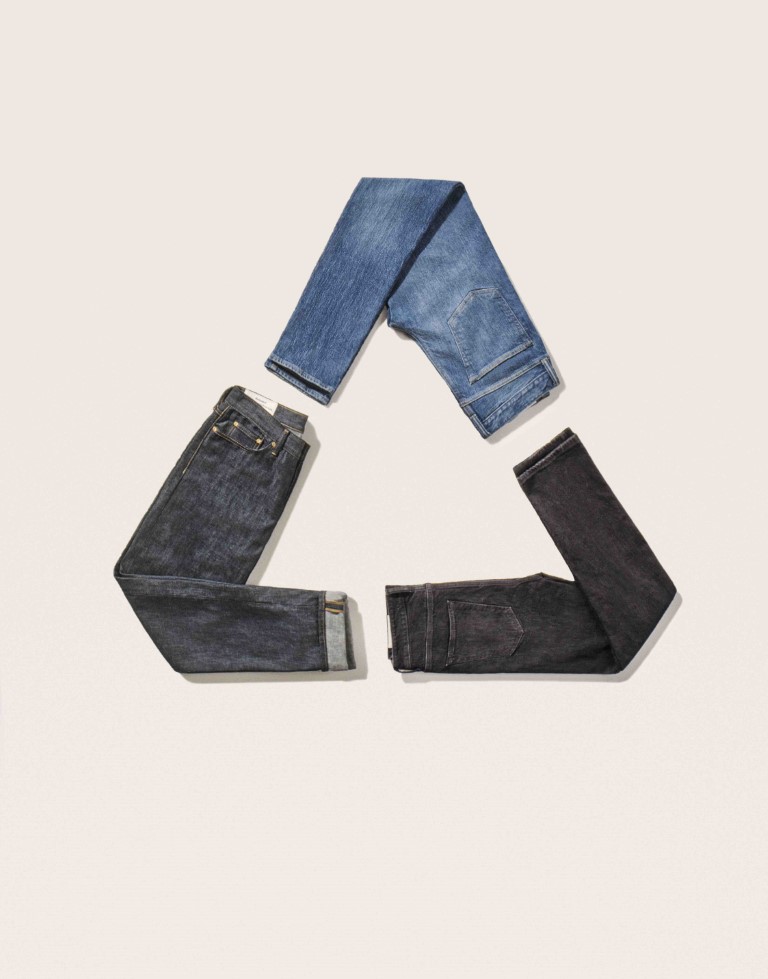H&M and the Ellen MacArthur Foundation rethink the design and production of denim in a move towards circularity

A pair of jeans is likely the most common garment that we can find in any wardrobe around the world. In order to transform the way jeans are made today, the Ellen MacArthur Foundation’s Make Fashion Circular initiative defined last year how denim design and production could fit into circular economy principles, through durability, recyclability and responsible use of resources. As a result of the participation in this visionary project, H&M now launches a remarkable men’s denim collection inspired by natural simplicity. H&M Jeans Redesign launches 15 October and will be available online at th.hm.com.

There are three jean styles, two jackets, an overshirt, tote bag and a bucket hat – all made in denim with a modern workwear vibe – in a colour palette of light grey, washed black, mid-blues and deep indigo. The collection rethinks the design and production of denim products, furthering our aim of becoming fully circular in all our processes. With workwear silhouettes and details, the three jeans styles in the Jeans Redesign collection are slim and straight, regular straight or a more relaxed shape, while the workwear jacket has three patch pockets to the front, the trucker jacket a zip fastening and the overshirt two patch pockets over the chest.

As a Strategic Partner of the Ellen MacArthur Foundation, H&M is working together with other companies, governments and cities, academic institutions, emerging innovators, small and medium sized enterprises, and more to accelerate the transition to a circular economy. The Jeans Redesign project in particular is about celebrating our denim expertise and designing pieces that are durable, timeless and easy to repair, that also age with a beautiful patina. We followed and, in some cases, even exceeded the guidelines put forth by the Ellen MacArthur Foundation on garment durability, material health, recyclability and traceability.

The denim fabric used throughout is made from a mix of:
- organic cotton
- up to 35% recycled cotton (from post-consumer waste)
- dyes that considerably reduce water waste and energy consumption compared to conventional alternatives
Going beyond the specific requirements set in the Jeans Redesign guideline, we also used the Screened Chemistry method for selecting safer chemicals. Only low impact finishes were used (green score in EIM, Environmental Impact Measurement by Jeanologia).

No conventional plating was used on the metal trims, thereby reducing the environmental impact. To enable circularity of our products, we used Tencel threads so the product can be recycled easily at the end of their life

“Sustainability and circularity should be seen as the parameters that designers move within. It’s a new set of borders and limitations, if you like. Being a designer is also about finding new opportunities and connecting more with the technical side of how a pair of jeans are made. This project went back to the foundations and what was taken for granted before was now seen with new eyes. With this collection we hope that we can take another great step towards making more sustainable products,” says Jon Loman, designer at H&M.
Editorial Staff : pr.fyibangkok@gmail.com mobile 096 449 9516
She’s also a co-founder of Thailand Closet, located on the first floor of the Bangkok Art and Culture Center.
Oftentimes, she speaks on public relations and marketing communications at educational institutions and other organizations.
Apart from work, she likes to widen her perspective and update herself on trends so that she’ll have fresh new ideas for her work.
- MUU BANGKOK HOTEL IS DELIGHTED TO CELEBRATE“MUU 1ST YEAR ANNIVERSARY” - December 8, 2023
- Layers of Tranquility : A Solo Exhibition of Mi Qiaoming - November 13, 2019
- Rebel Live Action #3 “ECO ART” - October 2, 2019






